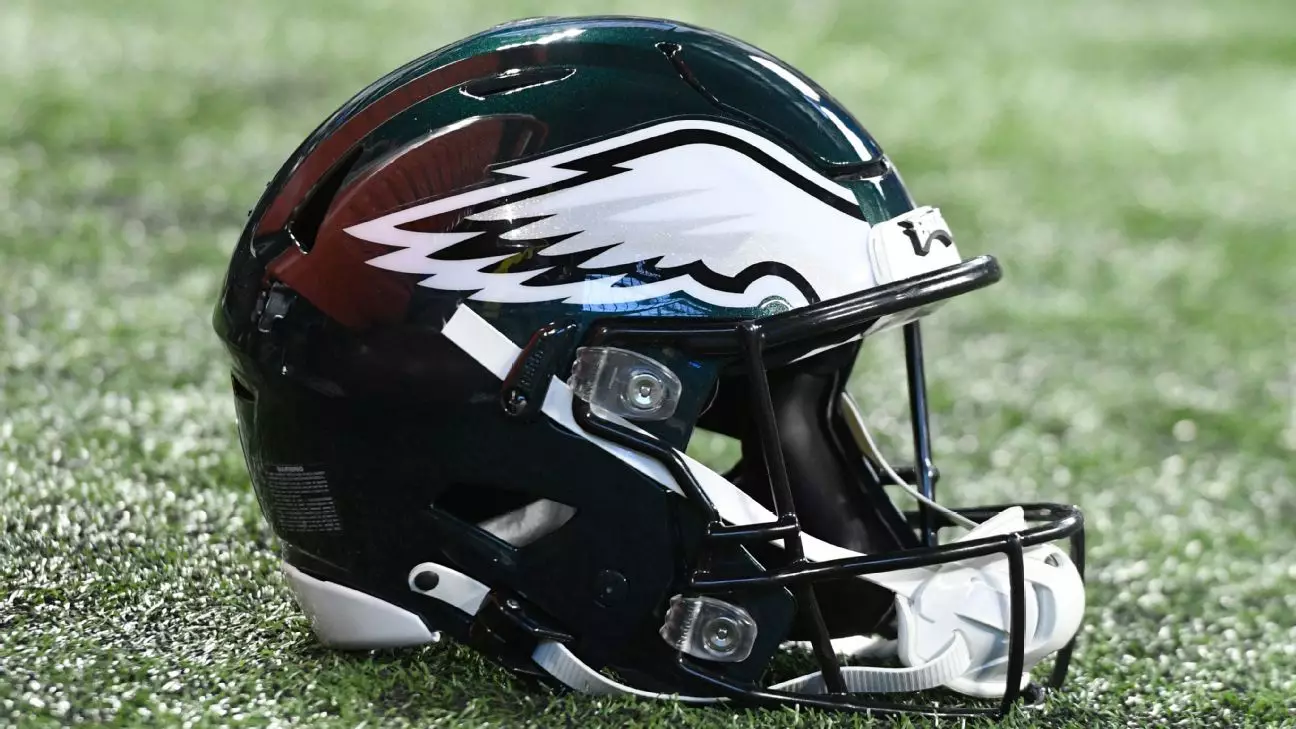In the world of professional football, trades are more than mere transactions; they are deliberate moves reflecting each team’s strategic vision. The recent trade that sent cornerback Jakorian Bennett from the Las Vegas Raiders to the Philadelphia Eagles exemplifies this dynamic. While at first glance, exchanging a young cornerback for a defensive tackle might seem like a typical roster shuffle, the underlying motives reveal a nuanced approach to team building.
The Raiders, by trading Bennett—who showed flashes of promise in his sophomore NFL campaign—are signaling their confidence in their emerging secondary talents. Bennett’s drop in the pecking order, despite his health improvements, underscores the brutal reality of roster management: talent alone is insufficient when competition intensifies and coaching staff seeks immediate performance gains. His relocation to the Eagles illustrates a calculated gamble on his potential to revive his career in a system that might better suit his skill set.
Conversely, for the Eagles, acquiring Bennett appears driven by their ongoing quest to strengthen a secondary that has lacked stability since parting ways with veteran Darius Slay. The absence of a definitive outside corner opposite Quinyon Mitchell has left a palpable void, which the Eagles hope Bennett can fill. This move demonstrates their emphasis on blending youth with potential, rather than relying solely on veteran presences. Both teams, through this trade, are subtly shaping their defenses with future scenarios in mind, emphasizing adaptability and strategic flexibility.
Evaluating the Components: Talent, Fit, and Future Prospects
Looking at the individual pieces, the trade offers insightful perspectives on player development and positional priorities. Jakorian Bennett’s trajectory has been hampered by injuries, yet he retains untapped upside. His performance in 2023, despite setbacks, showcased his ability to defend against the pass at a promising level. His resilience and optimistic outlook, expressed through statements about overcoming adversity, highlight qualities prized by teams seeking high-character players with growth potential.
Meanwhile, Thomas Booker’s addition fills a different, yet crucial role for the Raiders. The team is currently testing interior defensive linemen amid roster churn and injury concerns. Booker, a fifth-round pick with modest NFL stats, is not a star but a depth piece—a strategic acquisition aimed at maintaining line integrity without overcommitting draft capital. This move suggests the Raiders are prioritizing talent competition within their trenches, fostering a competitive environment where players like Tyree Wilson and rookies can earn their roles through performance.
From the Eagles’ perspective, the competition at outside cornerback is far from settled. With Darius Slay’s departure, the team is experimenting with multiple options, including Adoree’ Jackson and rookie Kelee Ringo. Defensive coordinator Vic Fangio’s comments about “close” competitions reflect a team in flux, searching for the best fit. This ongoing evaluation process indicates that Philadelphia values versatility and performance under pressure, aiming for a corner duo that can adapt to various offensive schemes.
The Broader Implications: Competition as a Catalyst for Excellence
This trade and the related positional battles underscore a fundamental truth about NFL success: depth and competition are critical. Teams investing in creating an environment where multiple players vie for starting roles inherently push each other toward higher levels of performance. Bennett’s story embodies this principle perfectly, as he embraces the underdog role, knowing that perseverance and resilience are vital in a league where roles can change rapidly.
For the Eagles, finding a stable and effective outside cornerback pair is more than a quest for immediate results; it’s an investment in long-term defensive resilience. The uncertainty expressed by Fangio suggests that the team values multiple options, avoiding over-reliance on a single player, which could be exploited by opposing offenses. The Raiders, on the other hand, seem to be shaping their line with a mindset of flexibility, actively seeking players like Booker to fill potential gaps and ensure they remain competitive, especially given their prior roster adjustments.
Both franchises’ moves highlight an understanding that roster depth, player versatility, and mental toughness are as vital as star power. By trading a promising but injury-prone cornerback and acquiring a depth lineman, the Raiders and Eagles are signaling their strategic priorities: building resilient units capable of adapting in a league where injuries and unpredictability are constants.
This nuanced approach to roster management reveals a sophisticated understanding of how to foster a competitive environment that emphasizes development and resilience. The NFL’s landscape is becoming increasingly tenant on the strength of depth charts shaped by strategic moving parts, and these recent transactions exemplify how teams are embracing that reality in pursuit of sustained excellence.

